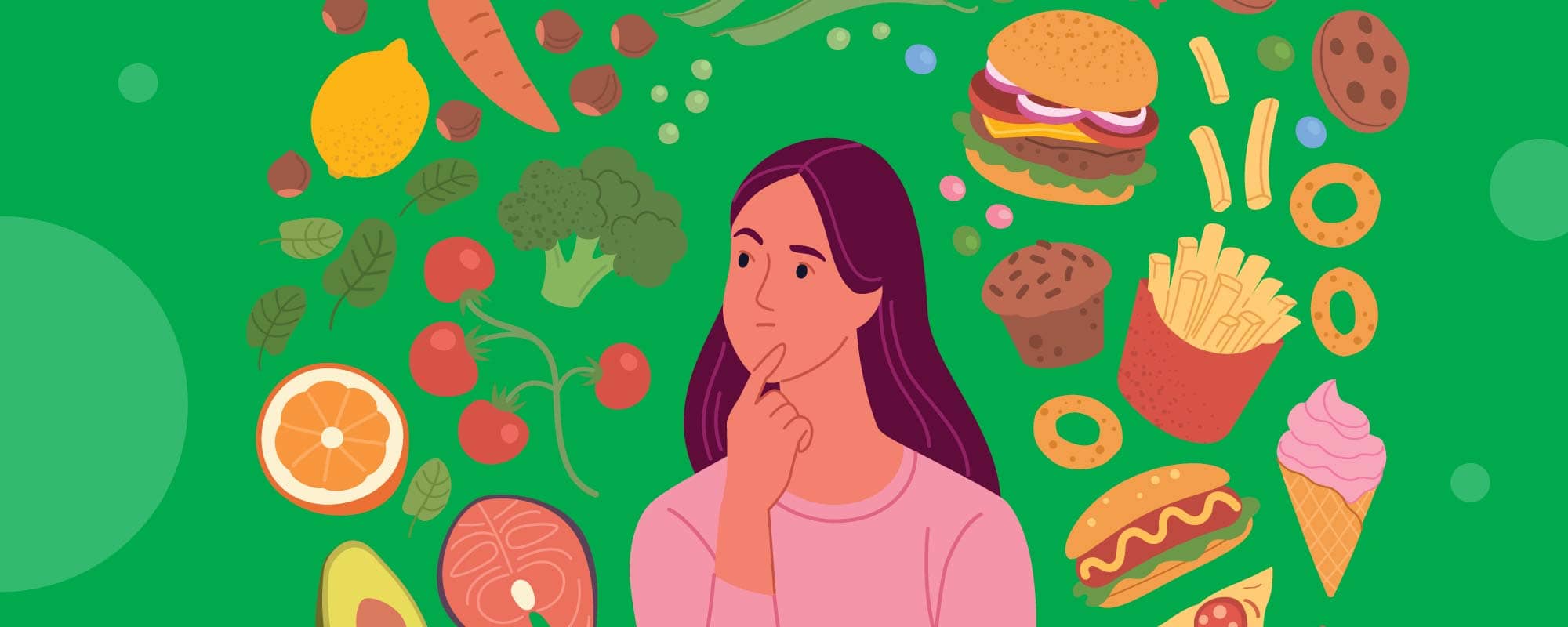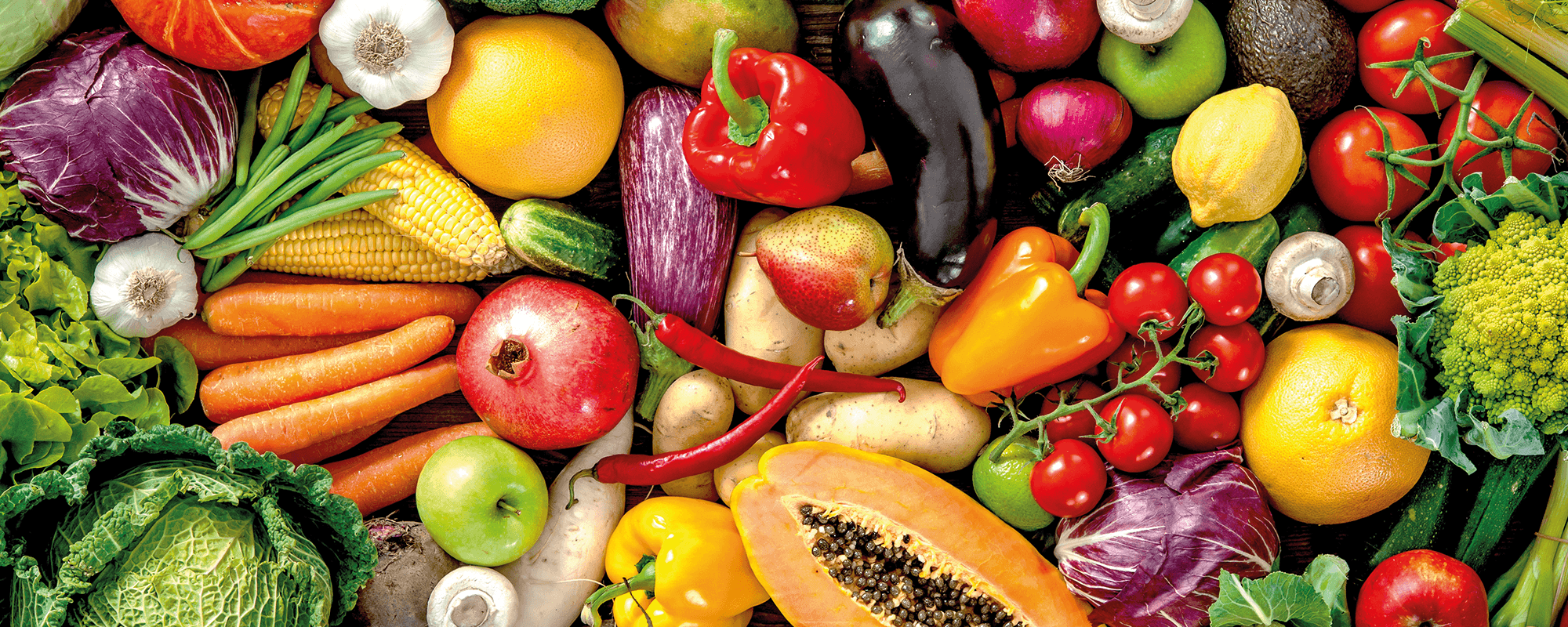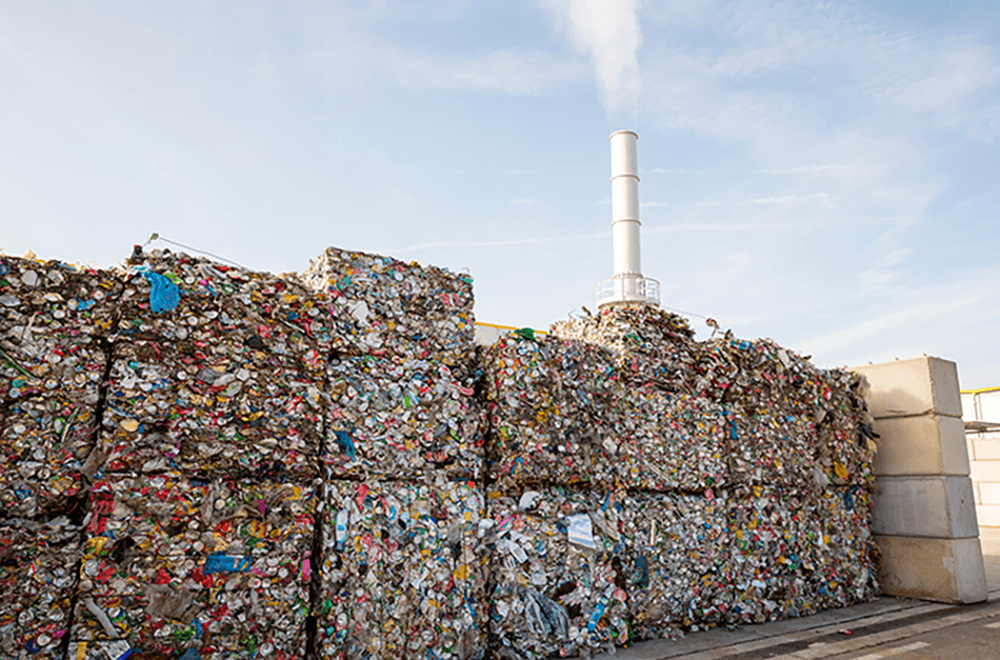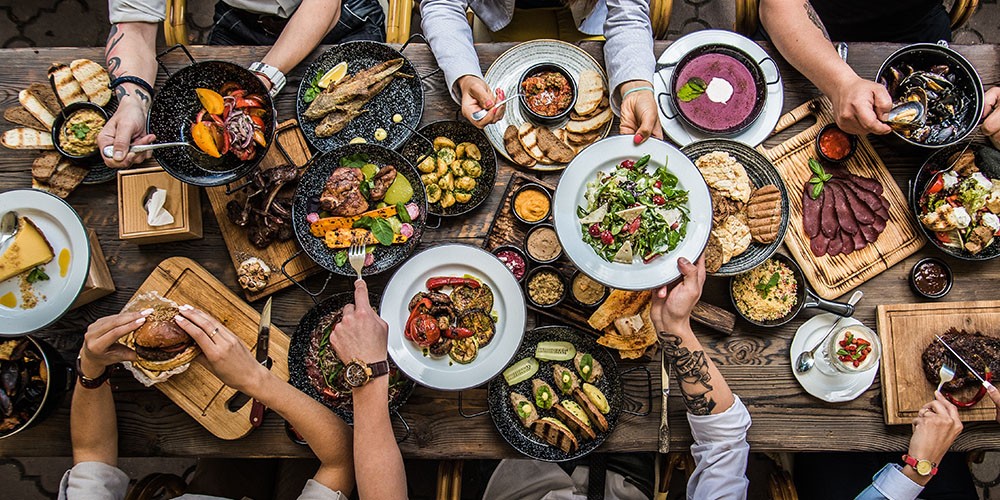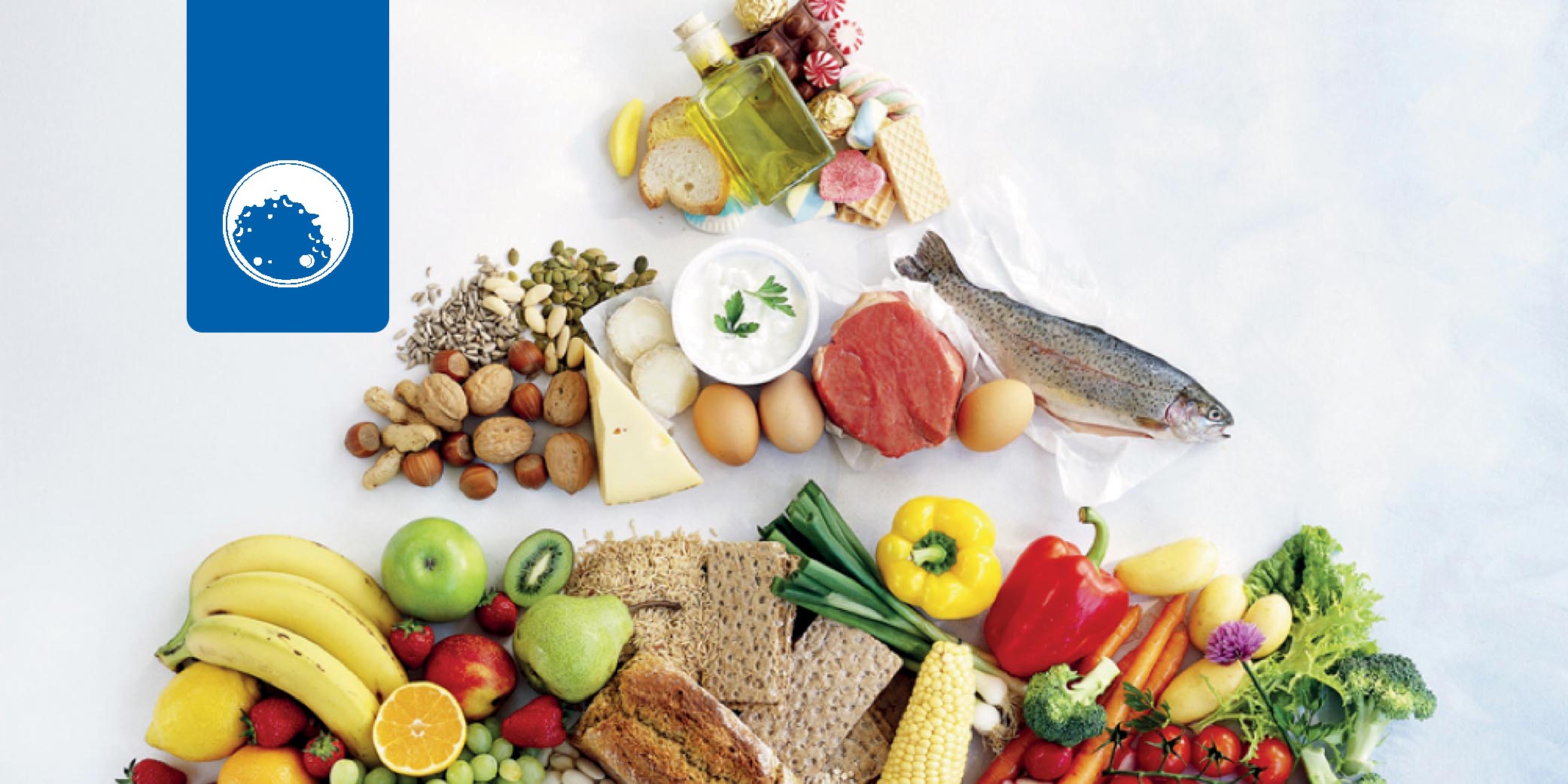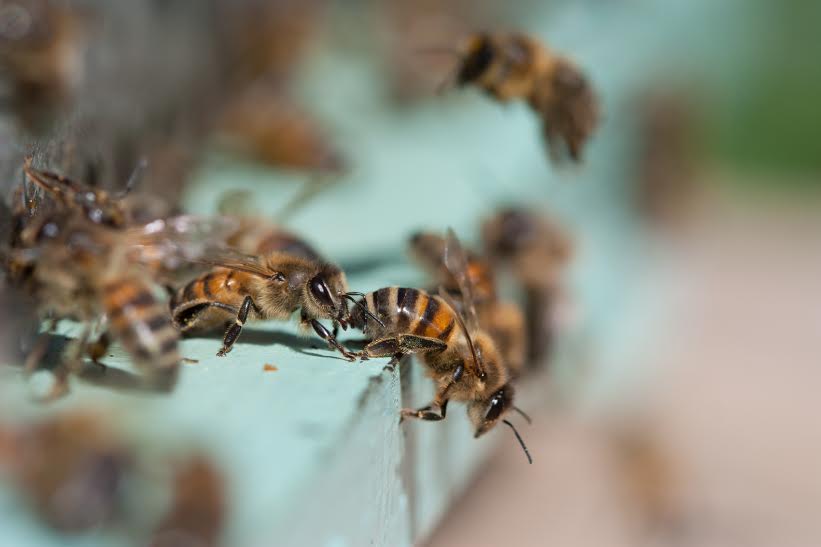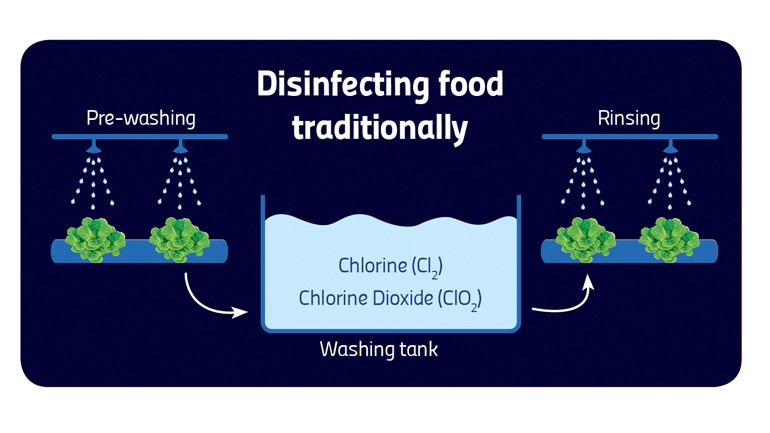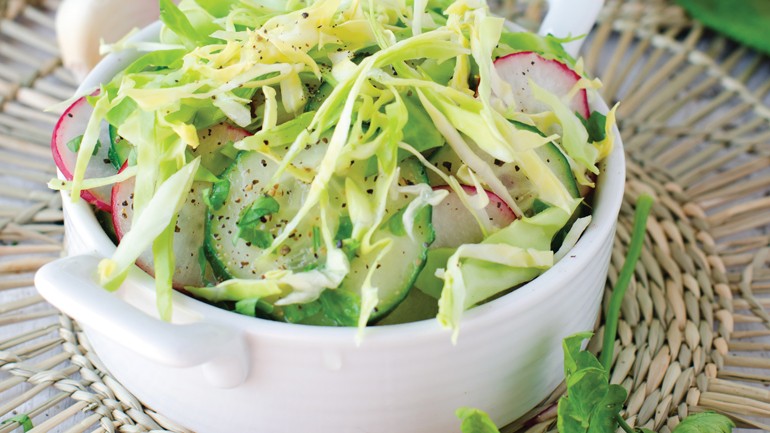Calorie-counting and crash diets may seem like the most accessible ways to get in shape, but a focus on what’s actually in the food we eat might reveal that staying healthy doesn’t need to be as difficult as we think… THINK speaks to University of Malta experts to find out the real deal.
Continue readingI <3 potato
Plant-based diets are going mainstream all over the world. Cassi Camilleri sheds light on the local vegan movement and how reducing our meat consumption can benefit us all.
Some label the rise of plant-based living as evidence of ‘trend culture’. And they’re not all wrong. Traditional media bombards us with countless headlines on the topic’s pros and cons. Hard-hitting advocacy films like Cowspiracy and Forks over Knives expose the horrors of the meat industry. Social media influencers share their experiences with the diet, turning it into lifestyle content. And now the market is following suit with vegan and veggie lines and options popping up everywhere.
In 2016, an Ipsos MORI survey for the Vegan Society identified that 3.25% of adults in the UK never eat meat in any form as part of their diet, equating to roughly 540,000 people. Vegan January—commonly known as Veganuary—is growing in popularity. This year, a record-breaking 250,310 people from 190 countries registered for the month-long vegan pledge. And Malta is no exception.
While the official number of people following a plant-based or vegan diet are unavailable, interest is clear. Facebook pages Vegan Malta and Vegan Malta Eats have a combined following of over 16,500 people.

The reasons behind people’s decision to take up veganism are various, however three main motivators keep being cited: health benefits, ethics, and environmental concerns. For vegan business woman Rebecca Camilleri the process was natural and gradual. ‘There was no real intention behind it for me. But after a couple of months of following this diet, I noticed that my energy levels were better than before, and this encouraged me to learn more on how I needed to eat in order to nourish my body with the right nutrients to sustain my active lifestyle.’
Researcher and nutritionist Prof. Suzanne Piscopo (Department of Health, Physical Education, and Consumer Studies, University of Malta) confirms that ‘moving towards a primarily plant-based diet is recommended by organisations such as the World Health Organization and the World Cancer Research Fund, for health and climate change reasons.’
Oxford academic Dr Marco Springmann has attempted to model what a vegan planet would look like, and the results are staggering. According to his calculations, should the world’s population switch to a vegan diet by the year 2050, the global economy would save $1.1 trillion in healthcare costs. We would also save $0.5 trillion in environmental costs, all while slashing greenhouse gas emissions by two-thirds.
Despite all this, veganism has earned itself quite a few enemies along the way. The vitriol thrown back and forth across both camps is shocking. Relatively recently, UK supermarket chain Waitrose came under scrutiny after magazine editor William Sitwell responded to plant-based food article ideas from writer Selene Nelson with a dark counter offer—a series on ‘killing vegans’. Sitwell was since forced to resign. Nelson posited that the hostility stems from ‘a refusal to recognise the suffering of animals. Mocking vegans is easier than listening to them.’

Abigail Higgins from American news and opinion website Vox agrees that guilt plays a role in the hatred aimed towards veganism, but also proposes that the whole movement ‘represents a threat to the status quo, and cultural changes make people anxious.’ This notion is based on research on intergroup threats and attitudes by US researchers Walter G. Stephan and Cookie White Stephan.
It however remains a reality that some of the loudest voices in veganism in the past have been militant. Some have invoked hatred and threats towards those that they perceive not to be sufficiently aggressive in promoting the cause. Piscopo calls for a respectful discussion.
‘Food is not only about sustenance and pleasure, but has symbolic, emotional, and identity value. Take meat for example. Some associate it with masculinity and virility. Others link it to food security as meat was a food which was scarce during their childhood. Some others equate it with conviviality as meat dishes are often consumed during happy family occasions. What is important is that we do not try to impose our beliefs, thoughts, and lifestyle on anyone.’
The way forward is a ‘live and let live’ approach, according to Rebecca Galea. When her journey started she had people ‘staring strangely at [her] food’. Even her family didn’t take her seriously. ‘They were very sceptical as their knowledge on veganism was very limited at the time,’ she remembers. Now, seeing the effect the switch has made to Rebecca’s life, her positive choices are naturally impacting theirs. ‘Everyone is free to make their choice,’ she says. Embodying the philosophy of leading by example, Rebecca has even set up her own business making delicious vegan nut butters, spreads, and more, to great success. ‘The more vegan options are available [in Malta], the more people will be attracted to learning and accepting the benefits of veganism. This might also lead to them following a vegan lifestyle!’
With that, and sharing valid, up-to-date research-based information, as Piscopo suggests, it seems there is no stopping this ‘trend’. And who would want to when veganism can lead to a lower carbon footprint and better health for everyone?
Waste’s carbon footprint
When people think about the impact waste has on our environment, they usually think about toxic materials in landfills, the land they take up, and the animals harmed by irresponsible waste disposal. But there is more. Our garbage also contributes to greenhouse gases (GHG) in the atmosphere.
Continue readingWhat’s lurking on your lunch?
In our modern, fast-paced lives, more of us are turning to convenient ready-to-eat meals. But with short shelf lives and high demand, food safety tests just aren’t quick enough anymore. Dr Sholeem Griffin tells Becky Catrin Jones how an innovative collaboration between microbiology and computing is tackling this challenge.
Continue readingFood, gender and climate change
Food is one of life’s constants. Yet, what we eat has major ramifications on global climate. Food production uses up major resources: it accounts for more than 70% of total freshwater use, over one-third of land use, and accounts for just shy of 25% of total greenhouse gas (GHG) emissions, of which 80% is livestock. Yes, that steak you just ate has had a direct impact on the world’s climate! There is something of an oxymoron in the world’s food ecosystems. Overconsumption is linked to major health problems like obesity, cardiovascular disease, diabetes, and certain cancers that together account for up to 71% of global deaths. On the other hand, there are around one billion people in the world who suffer from hunger and underconsumption. All of this is compounded by problems of food loss and waste. This raises important questions related to the ethics of worldwide food production and distribution.
Food production and consumption is determined by many factors: population numbers, incomes, globalisation, sex (biology), and gender (socio-cultural) differences. The combination of a sedentary lifestyle and an unbalanced diet, high in red, processed meat, low in fruits and vegetables, is a common problem in many developed countries. And this impacts not just human health, but also biodiversity and ecosystems.
Supervised by Prof Simone Borg, I chose an exploratory research design with embedded case studies. The aim was to analyse the dietary patterns of men and women. I wanted to critically question the power relations that feed into socio-economic inequities and lead to particular food choices. I used both quantitative and qualitative methods, modelling the life cycle assessment and scenario emission projections for 2050 in Malta, Brazil, Australia, India, and Zambia among males and females aged 16 to 64.
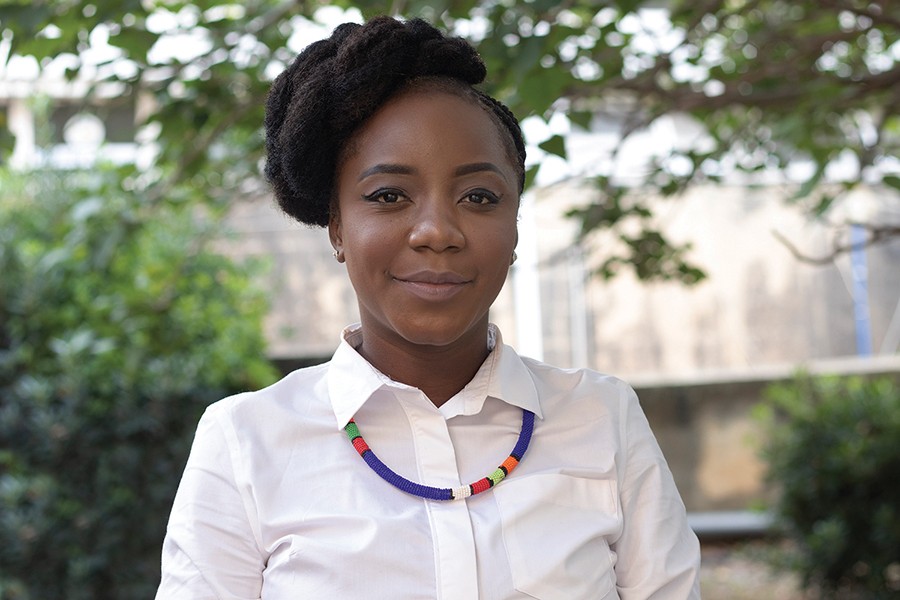
The four dietary scenarios I took into consideration were present-day consumption patterns (referring to the 2005/7 Food and Agriculture reference scenario), the World Health Organisation (WHO) recommended diet (300g of meat per week and five portions per day of fruit and veg), vegetarian/mediterranean/pescatarian diets, and the vegan diet. From there, I measured ammonia emissions, land use, and water from cradle to farm gate, with a special focus on gender.
The findings were alarming, indicating that none of the five countries are able to meet emissions reductions under current dietary patterns. If we were to adopt the WHO recommended diet, GHGEs would be cut by 31.2%. A better result would be gained from a vegetarian diet, which would slash emissions by 66%, while a vegan diet comes out on top with a projected 74% reduction.
Some interesting points that arose were that the Global Warming Potential is higher in men in all countries due to higher meat consumption. Zambia and India would benefit the most from the proposed dietary shifts in absolute terms, while Australia, Malta, and Brazil would feel the positive impacts on individual levels in per capita terms, reducing carbon footprints considerably.
Reduced meat consumption substantially lowers dietary GHG emissions. We need to prospectively consider the interplay of sex and gender, and develop climate change, health, and microeconomic policies for effective intervention and sustainable diets. Adopting a flexitarian diet that is mostly fruits and vegetables, with the occasional consumption of meat, can save lives, the planet, and economies—some food for thought!
This research was carried out as part of a Master of Science (Research) in Climate Change and Sustainable Development at the Institute of Climate Change and Sustainable Development, University of Malta.
Author: Precious Shola Mwamulima
Eat your way to a healthy life
With growing evidence showing that our eating habits affect not only our waistline, but our physical and mental health, should we all be turning to the Mediterranean diet to live longer, healthier lives? Prof. Giuseppe Di Giovanni, Prof. Christian Scerri, and Dr Paulino Schembri write.
Continue readingFood Indulgence: There’s an app for that!
Cooking for others has become increasingly complex these days thanks to ever more diverse dietary requirements. Monique Chambers talks to Jessica Edwards about her perfect solution.
Octopus around Malta: Safe to eat?
Heavy metals can be toxic to humans. They need to be monitored to ensure environmental levels do not go above dangerous levels. The European Commission has set acceptable maximum levels of metals allowed in food since most metals end up in humans through their diet.
But how do metals find their way into our food in the first place? Heavy metals can enter the environment in a number of ways, including through volcanism, fossil fuel burning, and antifouling paint use. The heavy metals bind with biomolecules inside living tissue, and can build up to dangerous levels. One prime example of how such metals end up in the food we eat can be seen in the case of the common octopus (Octopus vulgaris). The octopus is susceptible to accumulating high levels of heavy metals due to its high ingestion rate of benthic fauna.
Joshua Gili (supervised by Prof. Victor Axiak) recorded the concentrations of cadmium, copper, lead, and zinc in the common octopus. Specimens were collected from around Malta during summer and winter. The analysis was performed on two of the species’ tissues—the tentacles and the digestive glands— which function in a similar way to the human liver. Each tissue was gathered into one pool by site, then homogenised, dried, and acid-treated. Afterwards a technique called polarography was used to determine the levels of each metal. This data helped Gili decide whether metal accumulation in the tissue of octopi is affected by biometry, season, or geography.
In Malta, metal levels depended on where the octopus was caught. In general, the concentrations were lower than other Mediterranean regions. The levels of cadmium and lead in the tentacles were below toxic levels as stated by the European Commission, indicating that local octopus is safe to eat.
This research was performed as part of Joshua Gili’s Bachelor of Science (Honours) in Biology and Chemistry, which he is reading at the Faculty of Science, University of Malta.
The Bees and the Bats
 What do bats, bees, wasps and flies all have in common? They are providing humans with pasta sauce for free. These organisms all pollinate our fruit on a daily basis needed to fill the grocer with all the things we love.
What do bats, bees, wasps and flies all have in common? They are providing humans with pasta sauce for free. These organisms all pollinate our fruit on a daily basis needed to fill the grocer with all the things we love.
For plants to reproduce, the most important step of the process is pollination. During pollination, pollen grains (the male cells needed for sexual reproduction) fertilise the female egg cell. This leads to seeds around which form the fruit and vegetables humans love to eat. The male and female cells are found on different parts of the flower, this is where pollinators like bees and bats come into play. They transfer pollen from one plant to another fertilising them.
Bees and other pollinators are needed for food security and economic resilience. These creatures help pollinate 87% of plant species that we use for food, material, feeding livestock, and medicine. They are essential for human diets since 70% of the world’s crops need pollinators. In Malta, crops such as tomatoes and green pepper would not grow. Bees and pollinators affect the economy, with a worldwide estimate of €153 billion. Pollinators encourage biodiversity; they pollinate crops and wild plants helping to keep the environment healthy.
The decline of bees has serious consequences for the world. So important that it was a main issue discussed by the Commonwealth countries during CHOGM (Malta, 2015) at an event organised by Friends of the Earth. Paul de Zylva (Friends of the Earth, UK) outlined the main causes as habitat loss due to urbanisation, pesticides, and climate change.
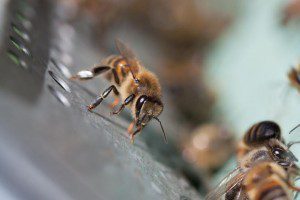 So how do we save the bees ?
So how do we save the bees ?
Politicians, researchers, and citizens must work together to reverse bee decline. Some actions are already being undertaken. Clive Harridge (secretary general of the Commonwealth association of planners) indicated that the UN member states must include 17 sustainable development goals (SDGs) in their political policies, three of these address ecosystem threats. One of these (SDG 2) emphasises the need to end hunger by achieving food security and improved nutrition through sustainable agriculture. Another, (SDG 11) states the need to make cities and human settlements inclusive, safe, resilient, and sustainable. While a third (SDG 15) indicates needing to protect, restore, and promote sustainable use of terrestrial ecosystems, sustainably manage forests, combat desertification and halt and reverse land degradation and biodiversity loss. Bees play a part in all of these goals.
Across the Commonwealth, national case studies are trying to understand the situation with pollinators to figure out how to save them. Ideas include areas where agriculture and wildlife are merged, creating habitats such as green roofs (green roofs are being built both at MCAST and the University of Malta), while some companies are even building bee hotels. Bee hotels are places where solitary bees can make nests and lay eggs without producing honey. These bees tend to be much less aggressive and thrive as long as there is enough wildlife for them to obtain food.
 Citizen engagement is needed to encourage participation to collect data and evidence. By working with researchers and policymakers real change can be achieved to save bees. Considering Malta’s situation, lecturer Dr Mario Balzan (MCAST) said at the CHOGM event that studies he was involved in showed that wild flowers growing near tomatoes helped increase their yield. Insects living on these flowers helped pollinate the tomatoes and may have acted as natural pest controls. By planting flowers in gardens and balconies bee habitat would be expanded.
Citizen engagement is needed to encourage participation to collect data and evidence. By working with researchers and policymakers real change can be achieved to save bees. Considering Malta’s situation, lecturer Dr Mario Balzan (MCAST) said at the CHOGM event that studies he was involved in showed that wild flowers growing near tomatoes helped increase their yield. Insects living on these flowers helped pollinate the tomatoes and may have acted as natural pest controls. By planting flowers in gardens and balconies bee habitat would be expanded.
There are many reasons for bee decline from uncontrolled pesticide use to widespread infections. Only by researching the problem then creatively addressing these issues can bee decline be reversed. This will require all sectors of society from citizens to researchers and policy makers to work together to save the birds and the bats.
This article featured in the Sunday Times of Malta.
Music for Clean Food
Everyone eats. Eating food straight out of a packet is the norm in our fast-paced world — a simple fact that makes food science ever more important. We need safe food. THINK editor Dr Edward Duca met up with researcher Dr Vasilis Valdramidis to find out about the latest tech.
Food safety is serious business. In Germany during 2011 a single bug hospitalised over 4,000 people causing 53 deaths. Scientists learnt afterwards that a strain of E. coli had picked up the ability to produce Shiga toxins. These natural chemicals cause dysentery or bloody diarrhoea. The bacteria were living on fresh vegetables and it took German health officials over a month to figure out which farm was responsible.
On the 2 May, German health authorities announced a deadly strain of bacteria in food. By the 26 May, they pointed their finger at cucumbers coming from Spain. They were wrong. The mistake cost the EU over €300 million in farmer reimbursements. Genetic tests found that the bacterium on cucumbers was different than the one which was killing people. The researchers continued to ask people who were infected what they ate: raw tomatoes, cucumbers, and lettuce remained the prime suspects. Till they tested organic local bean sprouts from a farm in Bienenbüttel, Lower Saxony. By the 10 June, the farm was forced to shut down after it was pinpointed as the source. The sprouts were contaminated from the seeds’ source in Egypt.
‘These bean sprouts are found in several ready-to-eat foods, you could have it in your sandwich and not realise that you’re eating it,’ said food scientist Dr Vasilis Valdramidis (University of Malta). This is the reason why it took German officials so long to find the source. Having to rely on people’s memory of what they ate before becoming sick, something as inconspicuous and mild tasting as a bean sprout can be forgotten. Precisely why industrial food safety is so important: it saves lives.
Cleaning food
‘There is no natural sterile environment,’ stated Dr Valdramidis who studies new ways to disinfect ready-to-eat lettuce, cabbage, and bean sprouts to make our food safe. Most bacteria come from nature or during handling. ‘After harvesting, there are 3 different steps for processing fresh produce. First, they are washed to remove all external material. Second, there is the disinfection process. […] Third, they apply a decontamination treatment that most commonly is chlorinated water.’
Dissolving chlorine dioxide powder into water makes most of the industrial chlorinated water. Chlorine is found in tap water so is relatively harmless at low concentrations, but ‘the less we have of this chemical the better for our health, because there are some side effects,’ explained Dr Valdramidis. ‘It can react with the organic substances of food products and produce some compounds […] that aren’t healthy.’
The environment is another problem. Chlorinated water ends up in ground water or other water sources. Elevated levels of chlorine can decontaminate vegetables but also natural habitats.
Dr Valdramidis’ group works to reduce the amount of chemicals, water, and energy used. Fresh water is a precious resource with less than 3% of the world’s water being fresh. In Malta, pressures on fresh water use are intense and the country is facing a little known water crisis. Worldwide energy efficiency is a hot issue, with both environmentalists and industry pushing for greater efficiency and cheaper energy bills.
From Oregano to Music
The herb oregano can be concentrated with its essential oils extracted. Surprisingly, at the right concentration oregano slows bug growth. Dr Valdramidis’ group is taking advantage of this antimicrobial effect to disinfect vegetables. ‘And it tastes better, but it depends on the amount; if you use too much it is bitter.’
The food industry’s bottom line is cost. ‘The extraction process is quite expensive but now the price is going down. [The food industry already] use oregano oil as antimicrobial agents in feeding products for animals. Their aim is to reduce the use of antibiotics. It [oregano] is becoming more and more accessible.’
Oregano oil might be more expensive, but it is a natural product that is non-toxic. Another advantage is that, ‘if the plant cells are relaxed then these essential oils can penetrate’ into the plant disinfecting it thoroughly. Once optimised, it could easily replace chlorine water, reducing the amount of damaging chemicals used.
Oregano could replace chlorine water, but what about the amount of water? Another technique, which uses sound to clean food, could help. Think about ultrasounds used to scan pregnant women. Those ‘operate on megahertz and create images, this [technology] operates on kilohertz and is powerful enough to create physical changes at a microscale’, which means they are high power systems. It works by pulsing sound waves at your submerged vegetable or fruit of choice. The sound creates bubbles that implode, creating a very high pressure and temperature. This energy can kill the bacteria. When Dr Valdramidis gets it right, it cleans the vegetable.
The process is even more extraordinary. The sound wave causes ‘a molecule of water to split and create [the molecules] hydrogen peroxide and other radicals, which are very unstable’ so they react with everything around them (including bacterial DNA), either becoming water again or attacking cells. ‘They affect the membrane of the bacterial cell,’ said Dr Valdramidis, ‘killing it.’ They can also damage plant cells, so the technique needs fine-tuning to get it right. By measuring the appearance, amount of vitamins, enzymes, and other nutrients lost by the procedure, researchers can tweak it to maximise its antimicrobial value and minimise its damage to the vegetable. To continue improving the technique a lot of his work is spent trying to understand exactly how the procedure works and why the bacteria die.
The ultrasound still needs water to work. Water cannot be removed from the equation because bubbles can only form in water and sound also travels better. Water quantity can be reduced. When using chlorinated water, another step is needed to rinse off the chlorine. In this case, it can be skipped. There is an even more radical technique that might bypass water altogether.
A lightning storm
Plasma is made up of ionised air. In nature, plasma is made by lightning, leaving a tell tale ozone smell. Food scientists can pass high frequency electricity through air to create a bacteria-killing plasma stream.
Ionised air kills bacteria because it forms radicals and ozone. Electric discharges create radicals and turn oxygen into highly reactive oxygen radicals (an unstable oxygen atom) or ozone (3 oxygen atoms joined together). These products can react with bacteria and inactivate them. Like sound waves they can also affect food. ‘High levels of ozone can bleach food by oxidising the product. There is no ideal technology,’ stated Dr Valdramidis. The difficulty in all of this is how to kill the bacteria and not the plant. Everyone wants salads with a nice colour, good flavour, and high nutritional value.
On the other hand, the beauty of this technique is that you can zap the food in its packet. So imagine just rinsing the food with a little water, wrapping it up, and finishing off the cleaning process with an electric pulse. The package can be delivered to your local grocer with minimal use of water and your mind at rest. Both sound waves and plasma could also spell the end of excessive chemical treatments.
A computer model of a fruit
Measuring microbe levels is the only certain way to know if food is safe. Traditional methods are labour intensive, time consuming, and expensive. Scientists first need to remove the bacteria from the product, then dilute the bacteria, then count the cells directly with plate counting techniques or under a microscope. More modern techniques use molecular methods such as PCR (Polymerase Chain Reaction) to find out the specific type of bacteria. This can make a huge difference since not all bugs are created equal.
To reduce costs and speed up the process, Dr Valdramidis uses mathematical models to predict the shelf life of products and apply the right decontamination process. ‘We want to predict the amount of bacteria present, so with these equations we are trying to describe how fast the bacteria are inactivated then [how fast those that survive] grow,’ explained Dr Valdramidis. The number of bacteria predicts food safety and how fast it rots.
For mathematical modelling to work, first ‘data needs to be collected […] by performing some experiments. Then I try to describe how the population responds and behaves using these equations. If I can verify this model, then I can come to you and tell you, ‘look, this product has these specific characteristics, within the range of this model, I can tell you that it will expire in 15 days and you don’t need to do any experiments.’ It’s a very powerful tool but it has to be well validated.’ It saves a ton of money, but you must be sure of the model otherwise people could be harmed.
Current maths has its limits. Scientists are still trying to correctly model a single cell. Plant or bacterial cells are complicated machines, with proteins, DNA, and other molecules all jam-packed together working synchronously for a cell’s survival and reproduction. To make things easier, scientists simplify cells when simulating them then consider a whole group of them, a population. Researchers test the whole population. If Dr Valdramidis’ group attempts to model a single bacterial cell’s growth in Malta, he would have to use the University’s supercomputer called ALBERT. Maths on this level uses a lot of computational power.
Taking the cell modelling idea to its extreme, some food scientists are trying to model every plant cell to make a complete fruit — a virtual fruit. They model, ‘the exchange of gases and so on since fruit is still respiring, still alive after harvesting.’ To control the respiration process, they ‘try to control the amount of [the hormone] ethylene, oxygen gas, and so on.’ They also use these models to simulate modified atmospheres around food seeing how they influence respiration rates. Shelf life is affected by plastic packages with different holes sizes, types of plastic, and other parameters. All of these properties are pumped into the mathematical equations and tweaked to maximise shelf life. ‘If you slow rates down, the food lasts longer and can be stored for a longer period,’ explained Dr Valdramidis, which makes both companies and consumers happy.
Working with industry
Dr Valdramidis is young but has a long career in fundamental research. He has modelled and tested the rate of bacterial growth (and inactivation) at changing temperatures, and even investigated how to decontaminate biofilms in industrial food processing plants. Importantly, he has looked into quantifying and speeding up the analysis of microbial levels on food to give an actual ‘best before’ date. His approach always coupled experiments to test his maths and predictions.
Innovations in food science aim to bring down prices, use less water, fewer chemicals, and less energy. For these reasons, Dr Valdramidis is now at a stage where he can collaborate with industrial partners. In Malta, he has already met with the Chamber of Commerce through the creation of a Food Industrial Advisory Platform. With this platform ‘we plan to organise workshops every 6 months. Once to speak about our activities and another to speak about subjects that are of interest to SMEs [Small to Medium Enterprise, or industry].’ Malta is run by food SMEs; they account for 65% of GDP.
Researchers need to work with industry — a statement on everyone’s bucket list. Its importance cannot be understated, since it is unlikely that universities will receive substantially more research funds unless businesses start seeing these institutions as partners. And, they could save or make big bucks by investing in research. Dr Valdramidis’ work is a clear call for collaboration.
Working with others is what drew Dr Valdramidis to Malta. ‘I firmly believe in collaboration. A lot of my [research] publications are not just from the university I would be working in but others as well.’ By opening arms wide open perhaps we can prevent mistakes, like those of the German health authorities, invest in research that reduces waste, and cleans our food just by playing a song at the right energy.
[ct_divider]
Some of the above research is supported by a Marie Curie FP7-Reintegration-Grant within the 7th European Community Framework Programme under the project ‘Development of novel Disinfection Technologies for Fresh Produce (DiTec)’, and part-funded by the Malta Government Scholarship Scheme.

